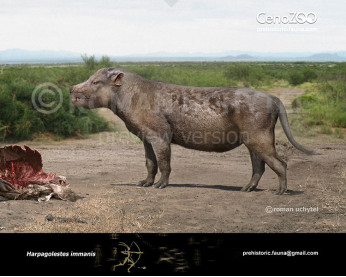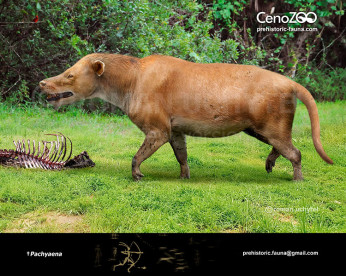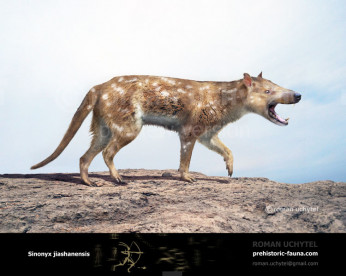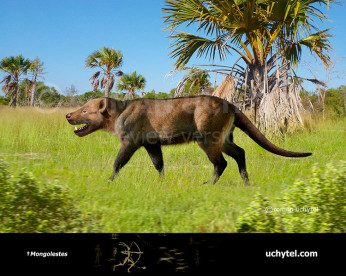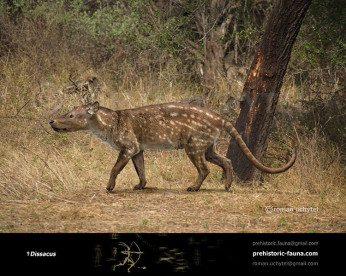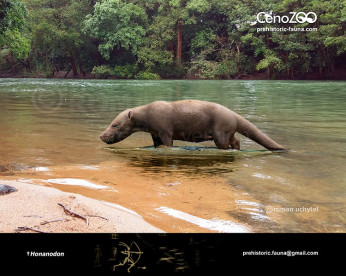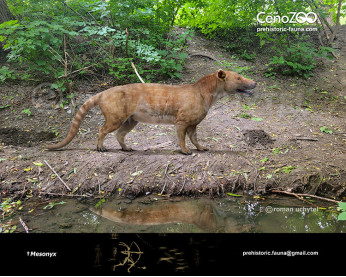Triisodon
29862986
Triisodon (†Triisodon (Cope, 1881))
Order: †Mesonychia
Family: †Mesonychidae
Dimensions: length - 2,1 m, height - 80 сm, weight ~40- 70 kg
Temporal range: during the Early Paleocene of New Mexico (North America)
A typical representative: Triisodon quivirensis
Triisodon is a genus of extinct carnivorous mammals within the family Mesonychidae, that existed during the Early Paleocene of New Mexico, North America, is the type genus of the family Triisodontidae, one of the three families within Mesonychia (the other two being Mesonychidae and Hapalodectidae). The genus was named by Edward Drinker Cope in 1881 as a member of the Acreodi, a now invalid taxon that encompassed both creodonts and mesonychians. Cope described the type specimen of T. quivirensis as "about the size of a wolf." A smaller species has also been identified from the same region. Since material from this genus is incomplete, the exact size of adults and whether they showed sexual dimorphism or regional variations in size is unknown.
Like many very early mammals, the relationship of triisonodontines to other living and fossil mammals has been uncertain, but most paleontologists currently consider them either mesonychids or the sister group of mesonychids, part of the stem group that led to artiodactyls (including whales) and the ancient South American ungulates
Payment
You may use multiple payment methods to buy image such as credit cards, PayPal and bank transfer.
Triisodon (†Triisodon (Cope, 1881))
Order: †Mesonychia
Family: †Mesonychidae
Dimensions: length - 2,1 m, height - 80 сm, weight ~40- 70 kg
Temporal range: during the Early Paleocene of New Mexico (North America)
A typical representative: Triisodon quivirensis
Triisodon is a genus of extinct carnivorous mammals within the family Mesonychidae, that existed during the Early Paleocene of New Mexico, North America, is the type genus of the family Triisodontidae, one of the three families within Mesonychia (the other two being Mesonychidae and Hapalodectidae). The genus was named by Edward Drinker Cope in 1881 as a member of the Acreodi, a now invalid taxon that encompassed both creodonts and mesonychians. Cope described the type specimen of T. quivirensis as "about the size of a wolf." A smaller species has also been identified from the same region. Since material from this genus is incomplete, the exact size of adults and whether they showed sexual dimorphism or regional variations in size is unknown.
Like many very early mammals, the relationship of triisonodontines to other living and fossil mammals has been uncertain, but most paleontologists currently consider them either mesonychids or the sister group of mesonychids, part of the stem group that led to artiodactyls (including whales) and the ancient South American ungulates

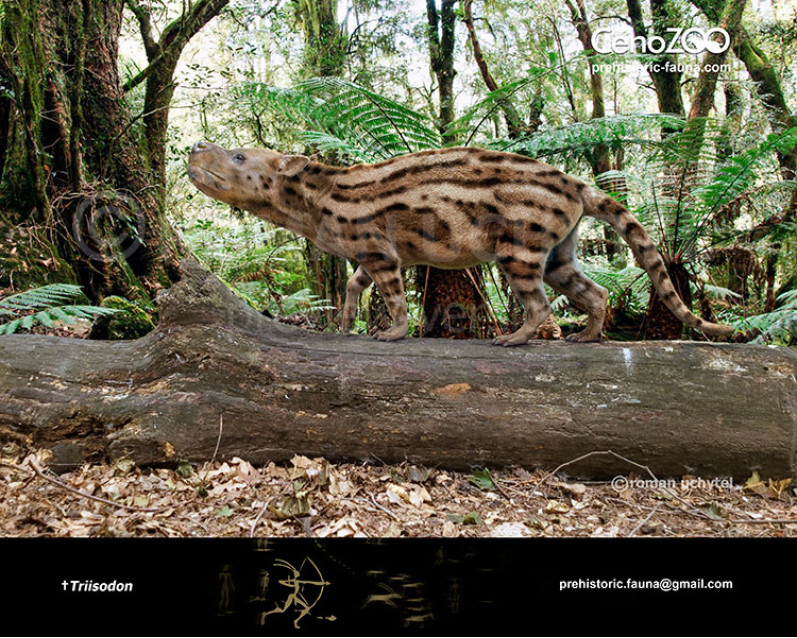
1-797x638.jpg)
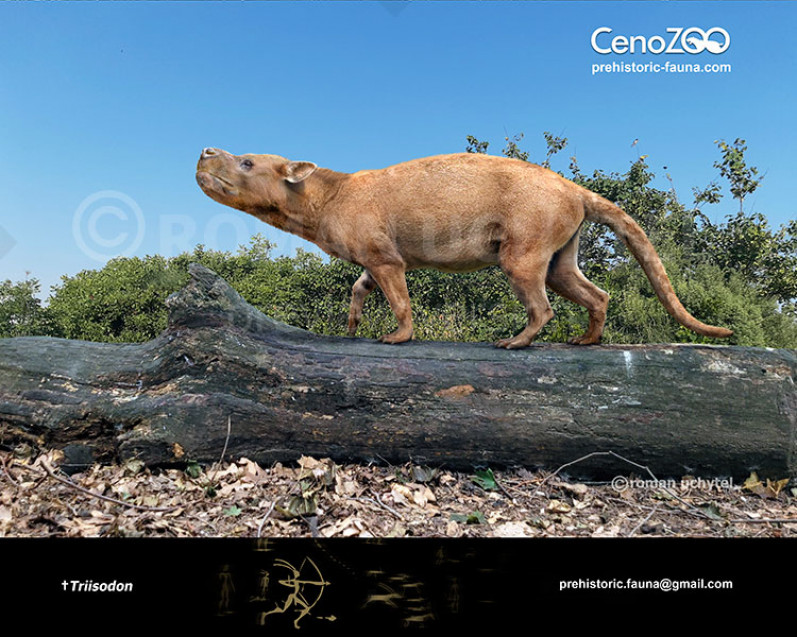

1-70x56.jpg)

